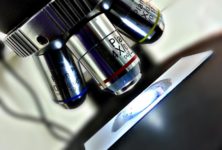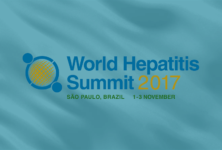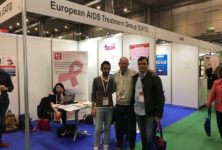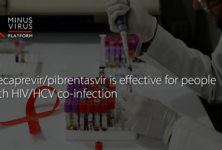Three quarters of those using England’s free self-sampling service are men who have sex with men, with the service particularly popular among younger men and men who have not recently tested, Luis Guerra of Public Health England told a Public Health England seminar last week.
While the service is marketed to both men who have sex with men and black African communities, only 7% of those testing belong to the latter group. A separate pilot study conducted with black African communities highlighted some barriers to the uptake of self-sampling in its current form.
The significant number of people living with HIV without being aware of their infection is one of the most persistent challenges to HIV prevention in the UK. Public health researchers and agencies are interested in the potential of new HIV testing technologies and innovative models of service delivery to encourage people to test more frequently.
Some services offer self-testing, in which the user collects a sample and performs the whole test themselves, including reading the result. However the programmes described here are self-sampling, in which the user collects a fingerprick blood sample and sends this off to a laboratory for analysis. Results are communicated by phone or text message a few days later.
Following a series of pilot projects, Public Health England (PHE) launched an HIV self-sampling service one year ago. However it has not been consistently available in all parts of the country – sometimes commissioned by PHE on a national basis, at other times only available to people living in the 54% of local authorities who have commissioned it for their residents. (For the next two months, it will again be available nationwide, to coincide with National HIV Testing Week and World AIDS Day).
Promotion and ordering of self-sampling kits is done online (www.test.hiv). As well as their postcode, users need to provide some information about their ethnicity and sexual behaviour in order to check whether they are eligible for the service. While the service is promoted to gay men and black African communities, it is available to other people at high risk of HIV.
Data were presented on users from November 2015 to September 2016. A total of 35,647 tests were ordered, with 52% of them returned. As with other self-sampling and self-testing projects, the number of orders is highly responsive to marketing and promotional activities, such as during National HIV Testing Week.
Whereas one third of users had tested in the previous year, one third had tested more than a year ago, and one third had never tested for HIV before.
In terms of demographics, 75% of people testing were gay men, 13% were heterosexual women and 10% heterosexual men. The service was also used by lesbian and bisexual women (1.7%) and trans people (0.6%).
Amongst the heterosexual men and women, 30% were of black African ethnicity. A further 20% belonged to other ethnic minority groups.
Two thirds of all users were under the age of 30, but they were not the most likely to have a reactive result.
Overall, 195 of 18,270 tests (1.1%) were reactive (in other words, possibly HIV-positive, but needing additional tests for confirmation).
Reactive results are especially likely to be seen in some groups of users: 2.3% in people aged 41-45 (and generally higher in older than in younger people), 1.6% in black African heterosexuals, 2.6% in black African MSM (and generally higher in ethnic minority MSM than in white MSM), and 3.0% in trans people.
How feasible and acceptable is self-sampling for black African people?
The problem of undiagnosed HIV and late diagnosis of HIV is especially acute in African communities in the UK. The high proportion of reactive results shows that African men and women who used the self-sampling service were especially likely to benefit from it, but relatively few African people did actually use it. Of 18,270 tests returned, 1229 (6.7%) came from black African heterosexuals and 77 (0.4%) from black African men who have sex with men.
At the same seminar, Catherine Dodds and Maureen Seguin presented findings from the HAUS study, which aimed to develop a self-sampling intervention for black African communities. Interviews and focus groups with African people and service providers suggested that privacy concerns could be a significant barrier to the model of online ordering and postal delivery of test kits. With many people living in shared accommodation or with family members, it would not be discreet enough.
Therefore, the intervention engaged staff in twelve GP surgeries and three community-based organisations in London to offer self-sampling kits to black African people. These could be returned by post, with results provided by text message or phone.
The number of people offered testing and agreeing to take part was lower than the researchers had hoped. In a period of four months, 349 potential participants were approached, 125 people agreed to take a kit, and 65 people returned a test. (A similar return rate to the national programme).
Some of the problem with uptake reflects challenges for the GP and community organisation staff – they found the process of offering the test time consuming. Many staff were uncomfortable only offering testing to black African people – and this was also a concern for a third of the people who returned a test.
When potential participants said they did not want to take part, they mostly cited barriers that are common to the uptake of HIV testing more generally – not feeling at risk of HIV or believing that their last HIV test was recent enough.
Among people who took a kit, quite a few complained that it was difficult to use the lancet and vial to collect a fingerprick blood sample, or returned a vial without enough blood to test. The researchers think that an improved sampling kit for blood or a sampling kit for oral fluid may be more acceptable – but they would need to be approved by European regulators first.
More positively, feedback suggested that the idea of self-sampling was popular, the intervention encouraged people to test, and that GP surgeries and community-based organisations were appropriate locations for the intervention.
Even with the relatively low uptake, according to their economic analysis the researchers believe the intervention is likely to be cost-effective.
By Roger Pebody
References
Guerra LE. National HIV self-sampling service. Expert seminar: new HIV testing technologies, London, November 2016.
Seguin M & Dodds C. Feasibility and acceptability of home sampling kits to increase the uptake of HIV testing among Black Africans in the United Kingdom: The HAUS Study. Expert seminar: new HIV testing technologies, London, November 2016. Slides are available here.


 ПОИСК ПО САЙТУ
ПОИСК ПО САЙТУ  поиск по ресурсному центру
поиск по ресурсному центру 



